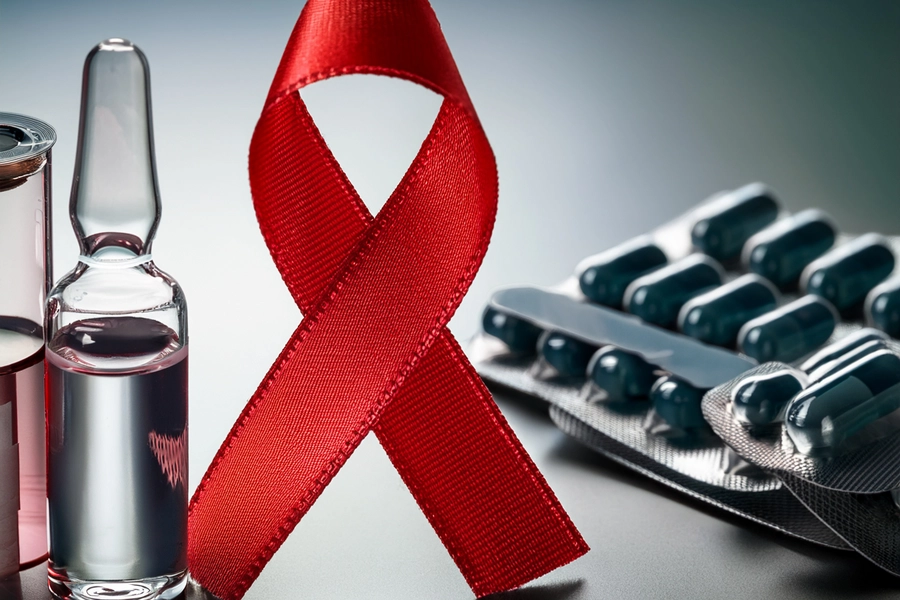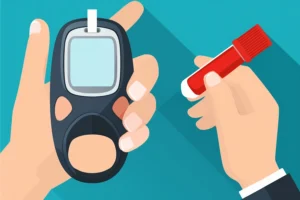In recent years, especially after 2023, the global fight against HIV has seen transformative advancements. Breakthroughs in long-acting prevention methods, innovative treatment regimens and state-of-the-art diagnostic technologies are rapidly changing the landscape of HIV care. These developments are not only enhancing treatment outcomes and simplifying therapy for patients but are also fueling global efforts to move closer to the vision of an HIV-free future.
With the introduction of new long-acting injectables, novel monoclonal antibody therapies, weekly oral medications and powerful stem cell research, healthcare providers now have a broader range of tools to combat the virus. Simultaneously, advancements in diagnostics are enabling earlier detection and faster intervention, critical for reducing transmission rates and improving long-term health outcomes.
As the world embraces this new era of HIV innovation, ensuring equitable access to these breakthroughs remains a vital challenge. In this article, we delve into the latest post-2023 advancements in HIV treatment, prevention strategies, ongoing clinical trials and the technologies reshaping global HIV care, offering a comprehensive view of progress and the path ahead.
Revolutionizing HIV Care: New Drugs and Clinical Studies
1. Lenacapavir: A Game-Changer in HIV Prevention
Lenacapavir, developed by Gilead Sciences, has emerged as a major breakthrough in HIV prevention. It is a first-in-class capsid inhibitor that works by disrupting the HIV capsid, the protein shell protecting the virus’s genetic material, thereby blocking multiple stages of the viral life cycle, including viral replication, assembly and transport. Administered as a subcutaneous injection, lenacapavir is a long-acting drug that only needs to be given twice a year for HIV prevention.
In the PURPOSE 1 and PURPOSE 2 Phase 3 trials, lenacapavir showed outstanding efficacy, providing 100% and 96% protection against HIV infection, respectively, with an excellent safety profile.
In February 2025, the U.S. FDA accepted Gilead’s New Drug Application under priority review, targeting a decision date of June 19, 2025, and the drug previously received Breakthrough Therapy Designation.
Gilead also submitted a Marketing Authorization Application to the European Medicines Agency (EMA) under accelerated review and is working through EU-M4all (EU-Medicines for All) pathways to ensure faster access in low- and middle-income countries. Lenacapavir is expected to become the first twice-yearly injectable PrEP option by late 2025, revolutionizing HIV prevention efforts worldwide.
However, ensuring equitable global access remains a critical challenge due to recent global health funding cuts.
2. Semzuvolimab (formerly UB-421): A Novel Approach to HIV Treatment
Semzuvolimab, developed by United BioPharma, is an investigational monoclonal antibody targeting the CD4 receptor on T cells, thereby preventing HIV from entering and infecting these immune cells. This mechanism offers a promising alternative for individuals with multi-drug-resistant (MDR) HIV strains.
Semzuvolimab is a non-T cell depleting, anti-CD4 monoclonal antibody that blocks the CDR2 domain of the CD4 receptor, effectively preventing HIV attachment and entry into host cells. It is administered intravenously at a dose of 25 mg/kg every two weeks.
The drug has completed Phase 2 clinical trials, including a single-arm, open-label study sponsored by the National Institute of Allergy and Infectious Diseases (NIAID). These trials aimed to assess the safety and efficacy of Semzuvolimab in combination with optimized background antiretroviral therapy (ART) in patients with MDR HIV-1 infection. The results have shown promising outcomes, indicating that Semzuvolimab can effectively control HIV in patients with resistant strains.
As of now, Semzuvolimab has not received FDA approval and is not available on the market. It remains an investigational drug undergoing clinical trials. The FDA approved an Investigational New Drug (IND) application for a Phase 2 trial in August 2022, focusing on its use in patients with Multi drug resistant HIV.
3. MK-8527: A Once-Monthly Oral NRTTI for HIV Pre-Exposure Prophylaxis
MK-8527, developed by Merck, is an investigational nucleoside reverse transcriptase translocation inhibitor (NRTTI) designed for once-monthly oral administration as a pre-exposure prophylaxis (PrEP) for HIV-1. It works by inhibiting HIV reverse transcriptase, thereby preventing viral replication. Early Phase 1 trials have shown promising results, including significant reductions in viral load after a single monthly dose, suggesting its potential as a more convenient alternative to daily antiretroviral therapy (ART).
As of April 2025, MK-8527 has completed its Phase 2 clinical trial. The study, which began on November 8, 2023 and concluded on February 12, 2025, involved approximately 352 HIV-negative adults in Israel, South Africa and the USA. The trial assessed the safety, tolerability and pharmacokinetics of MK-8527 administered once monthly. The results are currently under evaluation and Merck has not yet announced the next steps or timeline for regulatory submissions.
As of now, MK-8527 has not received FDA approval and is not available on the market. Its potential as a once-monthly oral PrEP option is contingent upon the outcomes of the completed clinical trials and subsequent regulatory reviews.
4. Islatravir (MK-8591): Progress in Long-Acting HIV Therapy
Islatravir (MK-8591), developed by Merck, is an investigational nucleoside reverse transcriptase translocation inhibitor (NRTTI) designed to inhibit HIV replication by interfering with the reverse transcription process. Administered orally, it was initially explored for once-monthly pre-exposure prophylaxis (PrEP).
However, due to safety concerns, including observed reductions in total lymphocyte and CD4+ T-cell counts, the U.S. Food and Drug Administration (FDA) placed clinical holds on several islatravir studies in late 2021. These included trials evaluating islatravir as a standalone PrEP agent and in combination therapies.
In response, Merck and Gilead Sciences initiated a collaborative effort to evaluate a once-weekly oral combination regimen of islatravir and lenacapavir, Gilead’s investigational capsid inhibitor. This combination aims to provide a long-acting treatment option for virologically suppressed individuals living with HIV.
Phase 2 clinical trials demonstrated promising results. At Week 24, 94.2% of participants maintained viral suppression (HIV-1 RNA <50 copies/mL) and at Week 48, the suppression rate remained consistent. These findings support the potential of the islatravir-lenacapavir combination as a once-weekly oral therapy.
As of April 2025, islatravir remains an investigational drug and has not received FDA approval. Its future availability will depend on the outcomes of ongoing clinical trials and subsequent regulatory reviews.
5. Bevirimat (PA-457): A Pioneering HIV Maturation Inhibitor
Bevirimat (PA-457), developed initially by Panacos Pharmaceuticals, is a first-in-class HIV-1 maturation inhibitor. It functions by inhibiting the final step in the viral assembly process, specifically blocking the cleavage of the Gag polyprotein at the capsid-SP1 junction. This inhibition results in the production of immature, non-infectious viral particles.
Administered orally, bevirimat demonstrated a long elimination half-life of approximately 55 to 80 hours, supporting the potential for once-daily dosing. Early-phase clinical trials indicated that bevirimat was generally well-tolerated, with mild side effects such as headache and throat discomfort.
Despite its promise, the development of bevirimat faced challenges due to naturally occurring polymorphisms in the HIV-1 Gag protein among different patient populations, which affected the drug’s efficacy. As a result, further clinical development was discontinued, and bevirimat has not received FDA approval.
As of April 2025, it remains unavailable on the market and is not undergoing any active clinical trials. Subsequent efforts have focused on developing second-generation maturation inhibitors with improved efficacy across diverse HIV-1 strains.
Technological Innovations in HIV Research
1. Stem Cell Transplantation and HIV Remission: A Step Toward a Functional Cure
In a significant breakthrough, two new cases of HIV remission following stem cell transplantation were presented at CROI 2025, bringing the total number of known functional HIV cures to ten. The first case, the “Chicago patient,” experienced viral rebound after stopping antiretroviral therapy (ART) but has now maintained remission for over ten months following a second ART interruption.
The second case, the “Oslo patient,” who received a stem cell transplant from a sibling and treatment for severe graft-versus-host disease (GVHD) with ruxolitinib, has remained in remission for two years without the need for ART. These cases, alongside earlier ones like the “Berlin patient” and “London patient,” highlight that stem cell transplants, particularly those involving CCR5-Δ32 mutations, can potentially lead to sustained HIV remission. The mechanism behind these cures lies in the CCR5-Δ32 mutation, which disables a receptor on immune cells that HIV typically uses to enter.
While most successful cases involved donors with two copies of this mutation, more recent examples, such as the “Geneva patient” and the “next Berlin patient,” show that even partial disruption of CCR5 may be sufficient. However, stem cell transplantation is a high-risk procedure, generally reserved for individuals with concurrent life-threatening cancers, and is not FDA-approved for HIV treatment outside of these contexts.
Despite the promise these cases show, stem cell transplants remain an impractical option for most people living with HIV due to their invasive nature and the risks involved. As such, research has shifted towards developing alternative therapies, including CRISPR-based gene editing, to replicate the CCR5-Δ32 mutation in patients’ cells without the need for a transplant. These ongoing trials offer hope that a more widely accessible functional cure for HIV may be achievable in the future
2.Gene Editing Breakthrough: CRISPR-Cas9 Therapy for HIV Cure
Gene editing technologies, particularly CRISPR-Cas9, are emerging as a groundbreaking strategy to cure HIV by eliminating the virus at the genetic level. CRISPR-Cas9 acts like molecular scissors, precisely cutting and removing integrated HIV DNA from infected human cells. One of the most promising developments is EBT-101, an experimental therapy created by Excision BioTherapeutics. EBT-101 uses a CRISPR system designed to target multiple regions of the HIV genome, aiming to reduce the risk of viral escape. The U.S. Food and Drug Administration (FDA) granted EBT-101 Fast Track Designation, recognizing its potential to address the unmet need for an HIV cure.
Early-phase clinical trials are ongoing, with preliminary findings suggesting that EBT-101 is safe and well-tolerated. However, efficacy data demonstrating complete eradication of HIV in humans is still awaited. Preclinical studies in animal models have shown promising results, but translating this success to humans remains a challenge. Critical hurdles include achieving efficient delivery to all latent viral reservoirs, avoiding off-target genetic edits and ensuring long-term immune safety. Despite these challenges, CRISPR-Cas9 therapy continues to offer hope for a future where HIV could be cured with a single, definitive treatment, representing a significant shift beyond the lifelong management currently provided by antiretroviral therapy.
3.Artificial Intelligence Transforming HIV Care
Artificial intelligence (AI) is rapidly reshaping HIV care by offering new ways to enhance diagnosis, treatment planning and disease prevention. Multimodal AI models, which integrate clinical data, genomics, imaging and patient-reported outcomes, are being developed to provide a more personalized approach to HIV management. These systems can analyze large and complex datasets to predict an individual’s risk of disease progression, optimize antiretroviral therapy regimens and detect early signs of treatment failure. AI tools are also being explored to improve adherence monitoring by analyzing patterns in electronic health records and wearable device data.
Furthermore, predictive AI models are helping to identify populations at higher risk for HIV acquisition, enabling more targeted public health interventions. While these innovations show great promise, challenges such as data privacy, algorithm bias and the need for validation across diverse populations remain critical areas of focus. Nevertheless, the integration of AI into HIV care has the potential to significantly improve patient outcomes, streamline healthcare delivery and support global efforts to end the HIV epidemic.
4.Nanotechnology and Microbicides in HIV Prevention
Nanotechnology is playing an increasingly important role in advancing HIV prevention strategies, particularly through the design of nanoparticle-based vaccines and topical microbicides. Nanomedicine approaches utilize nanoparticles to enhance the delivery and stability of antiviral agents, improving their ability to block HIV at mucosal surfaces where transmission typically occurs. A notable example is VivaGel, which contains dendrimer-based nanoparticles that have demonstrated the ability to bind to and inactivate HIV in preclinical studies. This formulation acts by physically blocking viral attachment and entry into host cells.
In addition to dendrimers, researchers are developing a range of nanocarrier systems to deliver antiretroviral drugs directly to target tissues, potentially increasing drug efficacy while minimizing systemic side effects. Ongoing research focuses on optimizing these technologies to improve protective efficacy, user acceptability and scalability for global deployment. Nanotechnology holds significant promise in creating next-generation preventative tools aimed at reducing new HIV infections worldwide.
5. Selective Photonic Disinfection (SEPHODIS) in HIV Research
Selective Photonic Disinfection (SEPHODIS) is an emerging technology that uses ultrashort laser pulses to selectively inactivate viruses including HIV, without causing damage to surrounding human cells. This technique operates by exploiting subtle physical differences between viral particles and human cells, allowing precise viral disruption while preserving healthy tissue.
SEPHODIS holds significant potential for applications such as sterilizing blood products, providing a safer blood supply and serving as a platform for rapid vaccine development. Early research has demonstrated promising inactivation of various viruses in laboratory settings, and efforts are ongoing to optimize the technology for clinical use. If successfully translated into practice, SEPHODIS could represent a major advancement in infection control, particularly for settings requiring rapid, non-chemical sterilization methods.
Access and Equity Challenges in HIV Treatment
While significant scientific progress has been made in the fight against HIV, achieving global equity in access to life-saving treatments remains a substantial challenge. Despite breakthroughs such as long-acting therapies and new technologies that offer hope for improved HIV management, their high costs present a significant barrier to access in many low- and middle-income countries.
Cost: One of the primary obstacles to global access is the high price tag associated with cutting-edge HIV treatments. New long-acting antiretroviral therapies (ART), which require fewer doses and offer better adherence options, are often out of reach for patients in resource-poor settings. The cost of these therapies can be prohibitive, limiting their availability to wealthier nations or individuals with comprehensive healthcare coverage. As a result, people in lower-income regions continue to face limited access to the most advanced HIV care, hindering efforts to reduce the global burden of the disease.
Licensing Efforts: In response to these concerns, organizations such as Gilead Sciences and UNAIDS are working to address the pricing disparity through voluntary licensing agreements and partnerships. These efforts aim to enable the generic production of HIV medications, making them more affordable and accessible in lower-income regions. By allowing generics to be manufactured, these partnerships help to reduce the cost of treatments, enabling countries with limited healthcare budgets to provide life-saving medications to a larger number of patients.
Goal – Ending AIDS as a Public Health Threat by 2030: Achieving the UNAIDS 2030 target to end AIDS as a public health threat hinges not only on scientific advancements but also on ensuring that these breakthroughs reach those most in need. Populations in low-income and marginalized communities, where the HIV burden is often highest, must have access to the latest treatments and prevention technologies. Without addressing these access and equity challenges, the promise of ending AIDS by 2030 may remain out of reach for many who need it most.
Conclusion
In conclusion, the recent breakthroughs in HIV treatment and research after 2023 offer significant hope for a future where HIV is no longer a global health threat. With the advent of long-acting prevention methods, novel treatment regimens and cutting-edge technologies, HIV care is evolving rapidly, providing patients with more effective and convenient options for management.
Innovations like lenacapavir, semzuvolimab and CRISPR-based gene editing therapies are at the forefront of this progress, offering promising new solutions for prevention and cure. Additionally, advancements in diagnostics and artificial intelligence are enhancing the ability to detect HIV earlier and tailor treatments to individual needs.
However, the journey towards an HIV-free world is not without its challenges. Access to these transformative treatments remains a major barrier, particularly in low- and middle-income countries where high costs and limited healthcare infrastructure hinder widespread adoption. Addressing these inequities through partnerships, licensing agreements and the promotion of generic drug production is crucial for ensuring that these advancements reach those who need them most.
The goal of ending AIDS as a public health threat by 2030 is within reach, but it requires a sustained commitment to both scientific innovation and equitable access to healthcare. By continuing to prioritize both research and global collaboration, there is a strong possibility that, in the near future, HIV may become a condition that is either manageable or completely eradicated, improving the lives of millions worldwide.
Disclaimer: The information provided in this article is intended for general educational and informational purposes only. It should not be used as a substitute for professional medical advice, diagnosis or treatment. Always seek the guidance of a qualified healthcare provider with any questions you may have regarding your health or medical condition. Never disregard professional medical advice or delay seeking it because of something you have read here. The latest advancements and investigational treatments mentioned are based on current research as of 2025 and may not be widely available or approved for general use.




